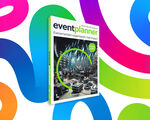Have you ever attended a conference or a trade show, where you were really excited about the education sessions? You were ready to soak up all the information that they had for you. Only when you actually attended the session, the speaker had a lack luster presentation with an impersonal delivery style that didn't make you want to listen.
Sure everything that he said is still very informative, but not engaging! You wanted the whole package: great session design, fun presentation, audience engagement and an upbeat speaker! If you miss out on just one of those you may have an audience that is less than pleased.
Before you get up and give your next presentation you need to keep this in mind: it is about the complete experience. You can't just have a great speaker; you need to think about all the components that make a great presentation. Step in your attendee's shoes and remember the scenario above, what changes can you make in your educational sessions to make the experience better for your attendees?
Presentation
Time and time again a speaker's go to presentation platform is PowerPoint. PowerPoint is still a great tool for presentations, but it can get a little stale and text heavy! People tend to think that because they have the space and ability to put words on the screen that they need to fill every inch of the page. No white space in sight. That is people’s first mistake – you should limit the text and fill your presentation with more visuals. Visual data is processed 60,000 times faster by the brain than text, which means that the audience will read through slides quicker and focus on you. Which is the point after all isn’t it? You have the information; you are the expert not the slides. There are a few presentation styles that do a great job with visuals over text:
- Pecha Kucha - 20 slides for 20 seconds: 6 minute presentation
- Speakers are only allotted 20 seconds per slide and then it moves automatically whether you are ready or not. The focus is on images and less text. This keeps speakers in line with their content and forces them to prepare ahead of time. Many conferences are starting to use this presentation style for smaller sessions and even adding a contest aspect.
- Haiku Deck - web & iOS based presentation software This presentation software is available online and through iOS phones and tablets where users are able to create complete presentations. With a fully stocked image library (with more 'real' images than any stock photo giant) and the ability to create graphs and charts this is PowerPoint 2.0. Like Pecha Kucha, it's image based and has a limit on the amount of words you can use per line. They even added a new feature using Artificial Intelligence to automatically generate a presentation for you when you upload an outline. Room DesignLet's make our session rooms more apt for engagement between attendees and the presenter! Meeting design has been a huge buzz topic for the last year, yet still some event professionals are not utilizing it. Meeting design can be described as the purposeful shaping of the form and content of a meeting to achieve desired results. If you made the seating in your session rooms designed for engagement, then attendees may be more likely to communicate with one another and the presenter may not seem as far away from them.Stability Balls People are still scared by this for some reason, but it is a great idea for seating! If you have been to any of the conferences where the Meeting Design Institute was organizing the education sessions, I’m sure you saw these in the rooms. With a larger focus on wellness this year, this allows your attendees to not only engage their mind with the session content, but their bodies as well. It also allows the session to feel a little more informal and more intimate for the attendee and presenter.Concentric Circles This puts the speakers closer to the audience and allows them to engage with more of the audience then they would with stadium style seating. The presenter now has to speak to the whole audience and not just look straight ahead. Again it allows for a more engaging and intimate experience between the two. Technology Any event today cannot bypass the use of technology, which goes for presentations as well. If speakers had a better way to get the audience engaged than just simply asking them to use Twitter or Instagram, everyone would be happy. There are many audience engagement apps that will allow speakers to instantly survey their audience. This is also great from the event organizer’s perspective because they now have important session data.Sli.do - They are a live Q&A and polling platform for events. Audience members can ask their questions through the app and you can then crowd source the best questions and monitor everything before it is live. This is great for hybrid events because our attendees online matter too! This allows the presenter to connect with that audience and make them feel like they are there and involved.Lumi - Lumi is a mix between an event app, conference platform and audience engagement system. They have one product that allows you to create interactive polling and voting options into your PowerPoint presentations (that might spice them up!). With a link directly though the app people can answer the questions and the polling options will display in the presentation. This is a fun way to get your audience involved, especially those who might not be so bold to express their opinions out loud. ConclusionPresentations don't have to be a one way passing of information. There are different ways that you can invite your audience to engage with you, whether it is through technology, seating style or your actual presentation format. Step in your attendee's shoes next time you are organizing your session formats or preparing your presentation and you will be sure to have a happy (and awake) audience!
- Haiku Deck - web & iOS based presentation software
- This presentation software is available online and through iOS phones and tablets where users are able to create complete presentations. With a fully stocked image library (with more 'real' images than any stock photo giant) and the ability to create graphs and charts this is PowerPoint 2.0. Like Pecha Kucha, it's image based and has a limit on the amount of words you can use per line. They even added a new feature using Artificial Intelligence to automatically generate a presentation for you when you upload an outline.
- Stability Balls
- People are still scared by this for some reason, but it is a great idea for seating! If you have been to any of the conferences where the Meeting Design Institute was organizing the education sessions, I’m sure you saw these in the rooms. With a larger focus on wellness this year, this allows your attendees to not only engage their mind with the session content, but their bodies as well. It also allows the session to feel a little more informal and more intimate for the attendee and presenter.
- Concentric Circles This puts the speakers closer to the audience and allows them to engage with more of the audience then they would with stadium style seating. The presenter now has to speak to the whole audience and not just look straight ahead. Again it allows for a more engaging and intimate experience between the two. Technology Any event today cannot bypass the use of technology, which goes for presentations as well. If speakers had a better way to get the audience engaged than just simply asking them to use Twitter or Instagram, everyone would be happy. There are many audience engagement apps that will allow speakers to instantly survey their audience. This is also great from the event organizer’s perspective because they now have important session data.Sli.do - They are a live Q&A and polling platform for events. Audience members can ask their questions through the app and you can then crowd source the best questions and monitor everything before it is live. This is great for hybrid events because our attendees online matter too! This allows the presenter to connect with that audience and make them feel like they are there and involved.Lumi - Lumi is a mix between an event app, conference platform and audience engagement system. They have one product that allows you to create interactive polling and voting options into your PowerPoint presentations (that might spice them up!). With a link directly though the app people can answer the questions and the polling options will display in the presentation. This is a fun way to get your audience involved, especially those who might not be so bold to express their opinions out loud. ConclusionPresentations don't have to be a one way passing of information. There are different ways that you can invite your audience to engage with you, whether it is through technology, seating style or your actual presentation format. Step in your attendee's shoes next time you are organizing your session formats or preparing your presentation and you will be sure to have a happy (and awake) audience!
- Concentric Circles
- This puts the speakers closer to the audience and allows them to engage with more of the audience then they would with stadium style seating. The presenter now has to speak to the whole audience and not just look straight ahead. Again it allows for a more engaging and intimate experience between the two.
- Sli.do - They are a live Q&A and polling platform for events. Audience members can ask their questions through the app and you can then crowd source the best questions and monitor everything before it is live. This is great for hybrid events because our attendees online matter too! This allows the presenter to connect with that audience and make them feel like they are there and involved.
- Lumi - Lumi is a mix between an event app, conference platform and audience engagement system. They have one product that allows you to create interactive polling and voting options into your PowerPoint presentations (that might spice them up!). With a link directly though the app people can answer the questions and the polling options will display in the presentation. This is a fun way to get your audience involved, especially those who might not be so bold to express their opinions out loud.







